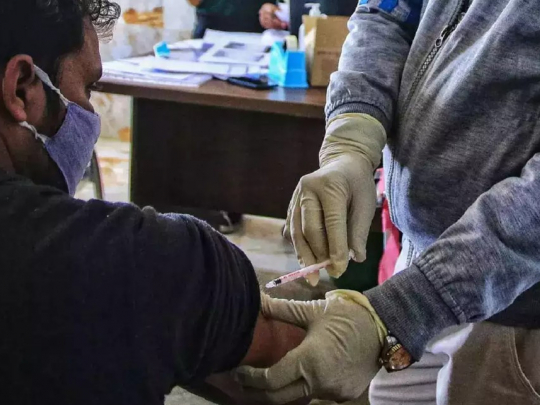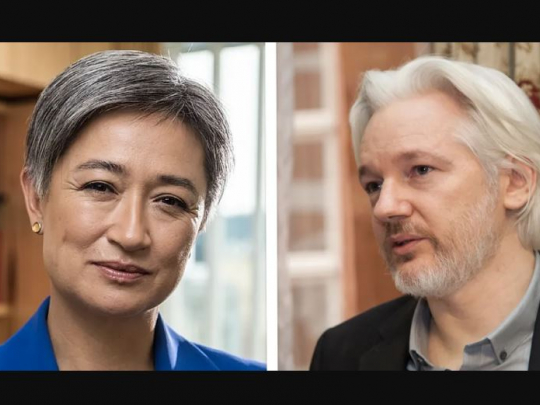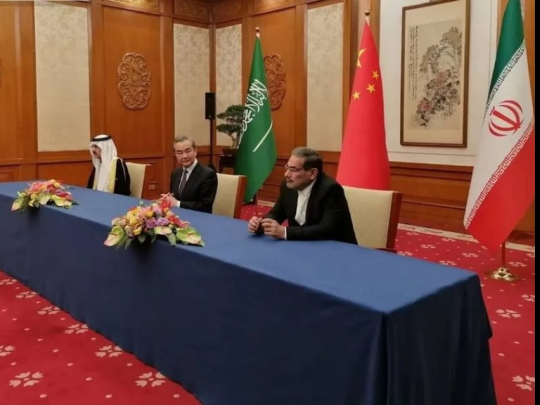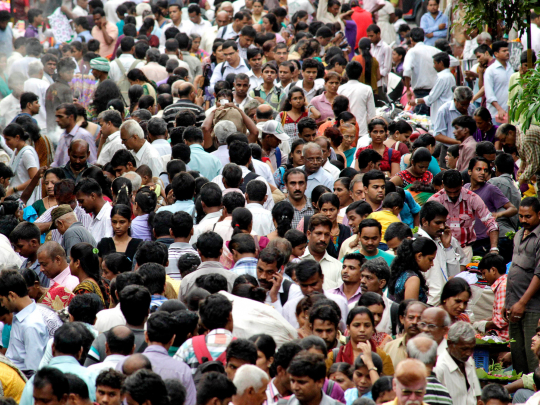The Number Of Uyghurs Has Tripled - The U.S. Calls It A Genocide - Propaganda Fails To Explain It
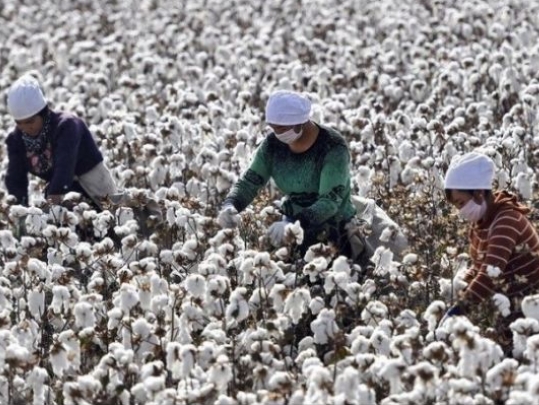
After being bashed with 24/7 "Trump is bad" news we are now punished with 24/7 of "Biden is great" news.
Actions which were an outrage when taken under Trump are now sold as rational endeavors when argued for by Biden acolytes.
To cover for the turnabout media are getting a bit in a twist and have to make up stupid excuses.
Consider this New York Times piece that now justifies a last minute action the former Secretary of State Mike Pompous took when he falsely declared that the Chinese development of the Xinjiang Uyghur Autonomous Region is a 'genocide'.
China’s Oppression of Muslims in Xinjiang, Explained
On the final full day of the Trump presidency, Secretary of State Mike Pompeo declared that China was carrying out a genocide against Uighurs and other Muslim peoples, the toughest condemnation yet of Beijing’s crackdown against its far western region of Xinjiang.
The incoming Biden administration has indicated its general agreement with the designation. A spokesman for Joseph R. Biden Jr. said during the presidential campaign last year that Beijing’s policies in the region amounted to genocide.
Here’s a look at the Xinjiang region, China’s crackdown there and what the genocide declaration could mean for the global response.
Uh oh - the 'good Biden' endorses something 'bad Trump' has done. Some mumble is needed to explain that!
Thus follows a number of inaccurate descriptions of the historic and current situation in Xinjiang:
Xinjiang, in the far northwestern region of China, has large numbers of Uighurs, Kazakhs and other mostly Muslim groups. It is culturally, linguistically and religiously more similar to Central Asia than the Chinese interior.
Uighurs have long bridled at Chinese control of the region, which has seen an influx of ethnic Chinese migrants and an increase in restrictions on local language, culture and religion. Minority groups in Xinjiang say they aren’t given jobs or contracts because of widespread racial discrimination.
The resentment has sometimes boiled over into violence, including attacks on police officers and civilians. In 2009, nearly 200 people, mostly Han Chinese, were killed in riots in Urumqi, the regional capital.
Most of Xinjiang has been under 'Chinese control' for more than 2,000 years. It has always been a mixed region with several ethnic groups including a significant Han population. It has also seen fast population growth caused by high birth rates and migration following strong economic development:
In the early 1800s the population under the Qing (Manchu) Dynasty was roughly 60% Turkic and 30% Han. In 1953, a People’s Republic of China census registered 4.87 million of which 75% were Uyghur and 6% Han. In 1964 the census documented 7.44 million of which 54% were Uyghur and 33% Han. After the beginning of the economic reforms, Xinjiang registered 13.08 million of which 46% were Uyghur and 40% Han. In terms of the 2000 census, Xinjiang’s 18.46 million people are 45.21% Uyghur and 40.57% Han. The current population situation is similar to that of the Qing when many Han lived in the area.
In 1953 there were 3.6 million Uyghur in Xinjiang. In 2,000 there were 8.4 million. Wikipedia says that in 2018 Xinjiang has a total population of 25 million of which 11.3 million are ethnic Uyghur.
It is quite weird to claim that such a consistent population growth of an ethnic group is somehow a 'genocide'.
This sentence from the above quote is especially interesting:
Minority groups in Xinjiang say they aren’t given jobs or contracts because of widespread racial discrimination.
It is followed a few graphs later by this claim:
In addition, the authorities have pushed work programs in Xinjiang, including the transfer of workers within the region and to other parts of China, that critics say most likely involve coercion and forced labor.
Which is it?
Are the Uyghur excluded from labor or are they coerced to labor?
The Times won't explain that contradiction so we will have to do that.
There has been high economic growth in Xinjiang for several decades. The state owned Xinjiang Production and Construction Corps, which was founded 64 years ago to develop the region, has seen above 10% growth rates in its industries over several decades.
Some of this growth has been in rural areas with extensive cotton farming. There are also large coal, oil and gas reserves in Xinjiang that have been developed. Another growth factor has been a rapid urbanization within the province.
Cotton farming, unless highly mechanized, requires a lot of seasonal workers to pick the cotton. These often came from Han provinces. A 2009 report in the NYT said:
The first wave of workers has arrived in the annual migration to China’s restive western region of Xinjiang this year to pick cotton, according to a report on Friday by Xinhua, the state news agency.
The workers are mostly ethnic Han and are the first large batch of migrant workers to make the journey to Xinjiang since deadly ethnic rioting broke out this summer.
A Reuters piece from 2014 tried to use the fact that Han migrants came to do such work to justify Islamist terrorism in Xinjiang:
URUMQI, China (Reuters) - Hundreds of migrant workers from distant corners of China pour daily into the Urumqi South railway station, their first waypoint on a journey carrying them to lucrative work in other parts of the far western Xinjiang region.
Like the columns of police toting rifles and metal riot spears that weave between migrants resting on their luggage, the workers are a fixture at the station, which last week was targeted by a bomb and knife attack the government has blamed on religious extremists.
“We come this far because the wages are good,” Shi Hongjiang, 26, from the southwestern metropolis of Chongqing, told Reuters outside the station. “Also, the Uighur population is small. There aren’t enough of them to do the work.”
Shi’s is a common refrain from migrant workers, whose experience finding low-skilled work is very different to that of the Muslim Uighur minority.
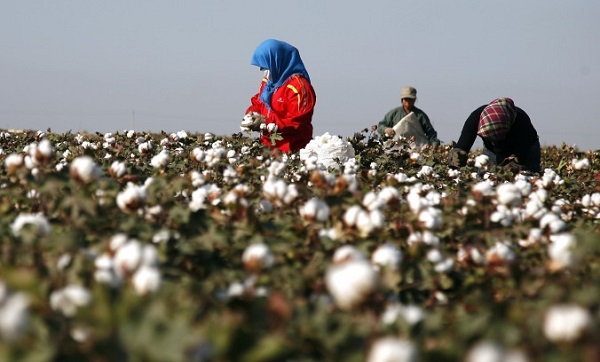
Employment discrimination, experts say, along with a demographic shift that many Uighurs feel is diluting their culture, is fuelling resentment that spills over into violent attacks directed at Han Chinese, China’s majority ethnic group.
It is correct that some employers preferred Han workers as they were schooled and spoke the main countrywide language. But the Chinese government had long recognized that a large part of the local rural population was still underemployed and already had taken measures to change that:
The Xinjiang Uygur autonomous region, China's prime cotton-growing area, plans to pump some 20 billion yuan ($3.2 billion) into its textile industry to create jobs and maintain social stability, local officials in its Beijing representative office said on Friday.
"The push for textile development will create more jobs in the sector," said Yan Qin, a top official of Urumqi. "It is not only a matter of economic returns and social benefits, but also a political issue."
...
Local officials said the policy focus will favor the underdeveloped southern part of the region. The southern Xinjiang city of Aksu, one of the major cultivation areas, is one area where the government aims to improve employment.
The move is part of Beijing's call to attract more labor-intensive textile manufacturers from the eastern cities to Xinjiang to open up employment opportunities for local people.
In 2016 Reuters reported on the success of Beijng's development policy:
AKSU, China (Reuters) - The Youngor cotton spinning factory is one of the biggest employers in Aksu, an agricultural town on the edge of the Taklamakan desert in China’s restive Xinjiang region.
Youngor, one of China’s largest shirt-makers, opened the plant in 2011 to be closer to the main cotton-growing region in Xinjiang. Soon it will be joined by others: Beijing wants to create 1 million textile jobs in Xinjiang by 2023.
...
Almost all of the 520 employees at the Youngor factory are Uighurs. The average factory floor salary is around 3,000 yuan ($463.18)a month, and comes with food and lodging - compared with roughly 4,000 yuan for textile workers in the southern China factory belt.
“There are still a lot of people to come out of (Xinjiang’s) countryside,” said Xu Zhiwu, general manager at Youngor’s Aksu factory, referring to government data that show 2.6 million rural residents sought work in Xinjiang’s cities in 2014.
Xinjiang Youngor Cotton Spinning Co Ltd, a unit of Youngor Group, is planning to expand its factory, built among apple orchards on Aksu’s outskirts, Xu said.
Beijing's development policies were successful. The seasonal cotton picking campaign is no longer done by Han migrant worker but by locally recruited people:
The replacement of Han labor migrants from eastern China with local ethnic minority laborers who are mobilized through labor transfer schemes is taking place in all cotton-growing regions in Xinjiang. In 2018, of 250,000 cotton pickers in Kashgar Prefecture, 210,900 were locals (via labor transfer policies), 39,100 came from other regions of Xinjiang, and only 6,219 or 2.5 percent hailed from other parts of China.
The report notes the numbers of cotton pickers from other parts of China are declining. In the same year, the number of cotton pickers in Aksu Prefecture who were organized through the labor transfer mechanism increased by 21 percent. In 2020, Aksu needed 142,700 cotton pickers; of them, 124,500 were locally organized (likewise via state-arranged labor transfers).
Karakax County in Hotan Prefecture sent out more cotton pickers mobilized through labor transfer – an increase from 40,600in 2017 to 54,000 in 2018, mobilizing 15.7 percent of its population aged 18-59 years to pick cotton in other regions. A 2020 news article from Aksu explains that counties with more cotton plantations request labor from those with fewer plantations, stating that as a result the region “no longer needs to attract cotton pickers from elsewhere.”
The 'labor transfer policies' are in fact state sponsored local recruitment campaigns for well paid seasonal work. This local recruitment is what the Times calls "coercion and forced labor".
When, years ago, Han migrant workers came to Xinjiang to pick cotton and for other work 'western' media complained and used that to justify Islamist terrorism.
After China introduced a better development policy and the companies started to recruit from the local Uyghur population for cotton picking and other textile industry work the very same 'western' media complain about "coerced labor".
Instead of explaining the successful development the New York Times is using it to argue that an ethnic group, which over the last seven decades more than tripled in size, is under threat of genocide.
There is nothing that China could do to end such silly propaganda.
- Source : Moonofalabama.org




